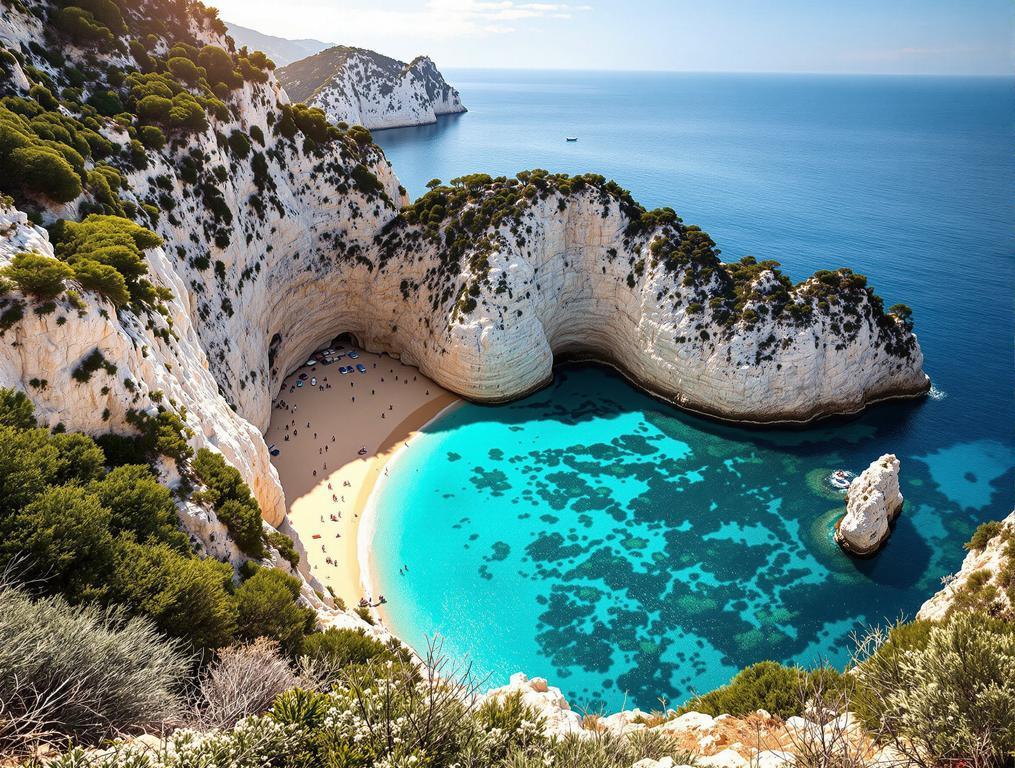The gravel crunches underfoot as I navigate the narrow path descending toward Calanque de Sormiou. The early July sun beats down, but a cooling Mediterranean breeze offers relief as I round the final bend. Suddenly, it appears – a pristine white-sand cove embraced by dramatic limestone cliffs, turquoise waters sparkling below. This hidden paradise outside Marseille creates a startling numerical paradox: a tiny community of just 1,297 residents that somehow absorbs up to 3,000 daily visitors during peak summer days. The 2.3:1 ratio of tourists to locals makes this one of France’s most intriguing population imbalances, yet few outside Provence know the full story.
The Hidden Mathematics of Sormiou’s Summer Surge
As I descend the final stretch toward the beach, I count 27 hikers making their way up the path. “It’s still early,” smiles a passing local carrying fresh bread. The mathematics of Sormiou create a fascinating ecological experiment: how can a fragile coastal ecosystem handle triple its permanent population daily?
The answer lies in deliberate restrictions. During summer months, authorities implement a strict car ban, forcing visitors to either hike 45 minutes from designated parking or take limited shuttle buses. This environmental protection measure creates an exclusive experience similar to those found in French villages with architectural wonders where access limitations preserve the experience.
The cabanons – small fishing cottages that dot the shoreline – tell another story of Sormiou’s uniqueness. These simple structures, many without electricity, have been passed through generations of local families who fiercely protect their cultural heritage while reluctantly sharing their paradise with outsiders.
Mediterranean’s Answer to Greek Fjords
What makes Sormiou worth the effort? The dramatic white limestone cliffs contrasting with turquoise waters create scenery often compared to Greek fjords, yet with distinctive Provençal character. The cove sits within Calanques National Park, France’s 10th national park and remarkably, Europe’s largest suburban protected area.
“I’ve visited Croatia, Greece, and Italy’s coastlines, but nothing compares to the raw authenticity here. The effort required to reach it keeps away the masses you find in similar beauty spots.”
The preservation model mirrors other French island sustainability efforts, where limited access creates exclusivity while protecting fragile ecosystems. What distinguishes Sormiou is its proximity to Marseille – just 20 kilometers from France’s second-largest city, yet worlds apart in atmosphere.
In July 2025, the contrast between crowded Mediterranean destinations and this protected cove becomes even more pronounced. While Greek islands see record tourism, Sormiou maintains its delicate balance through strict access management.
What the Guidebooks Won’t Tell You
The savviest visitors arrive via the Baumettes parking lot (€5 all-day) around 8:30 AM, before shuttle services begin and heat intensifies. The paved path takes 45-60 minutes depending on pace, with the final descent revealing increasingly spectacular views.
Local insiders know to visit on weekdays, particularly Tuesdays or Wednesdays, when even July crowds thin considerably. The single restaurant requires cash payment and advance reservations during peak season, but serves authentic Provençal seafood worth the splurge.
The Blue Grotto near Morgiou represents a lesser-known treasure, with steps carved for King Louis XIII’s fishing expeditions still visible – a historical detail overlooked by most visitors focused solely on beach access. During summer 2025, new coastal phenomena experiences include guided sustainability tours explaining the fragile ecosystem.
As I reluctantly begin my ascent from the cove, the afternoon light casts long shadows across limestone cliffs. Sormiou embodies what I cherish most about travel – places that don’t surrender easily to mass tourism, maintaining their soul through a combination of natural barriers and deliberate protection. My daughter Emma would call this “nature’s secret hideout,” and she’d be right. The calanque reveals itself fully only to those willing to make the effort, a philosophy the residents of this special corner of Provence have embraced for generations. In an age of instant access, some treasures still require dedication to discover.
